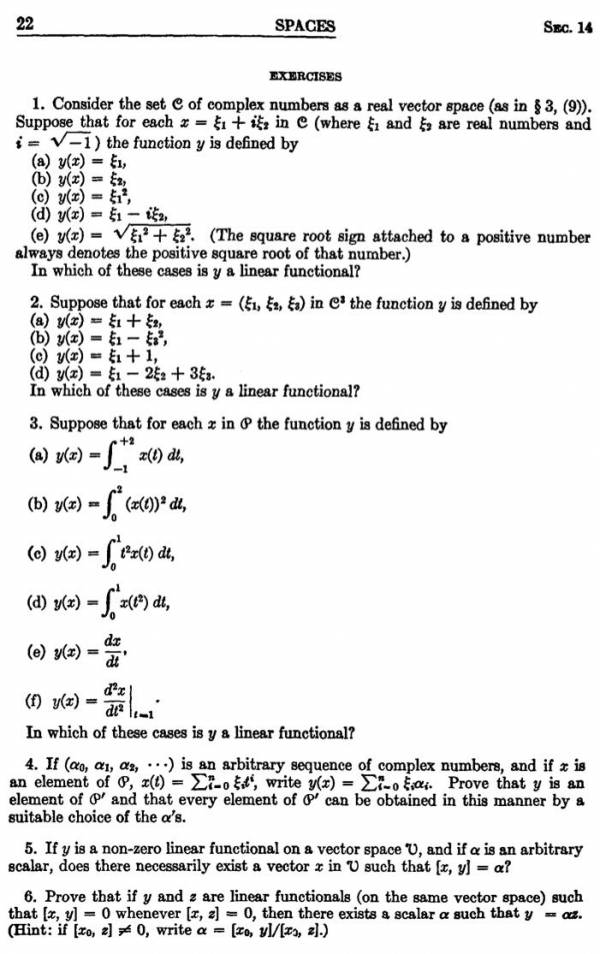
See the chapter on dual vector space for notations. My canonical pairing is using pointed bracket $\langle -, - \rangle$, Halmos uses $[-,-]$.
Solution
1. $y$ is a linear function in case (a) and (b). Case (d), $y$ is not taking value in $\R$, but in $\C$. we are considering here a vector space over $\R$, hence linear functional should be valued in $\R$ as well. Case (e), this is an example of homoegeous function, that is, if you have a positive number $c$, then $y(c x) = c y(x)$, however, it is not linear, as $y(x_1 + x_2) \neq y(x_1) + y(x_2)$.
2. (a), (d) are linear.
3. a,c,d,f are linear. For the case (e), $\frac{d x}{dt}$ is a function, or element in $\gdef\pcal{\mathcal P} \pcal$(the space of polynomials), but not a number in $\C$.
4. One can check that $y(x)$ is a linear function on $\pcal$. To see that every linear function is of this form, we may do this: let $F \in \pcal'$, and $x(t) \in \pcal$. Say $x$ is of degree $n$, we have $$ F(x(t)) = F(\sum_{j=0}^n \xi_j t^j) = \sum_{j=0}^n \xi_j F(t^j) = \sum_{j=0}^n \xi_j \alpha_j $$ where we define $\alpha_j = F(t^j)$ for any $j \geq 0$.
5. Yes. By definition, $y: V \to \R$ is a function whose image is not just $\{0\}$. Suppose $v \in V$, and $y(v) \neq 0$. We consider the element $w = v / y(v) \in V$. Then $y(w) = y(v/y(v)) = y(v)/y(v) = 1$. Hence, for any $\alpha \in \R$, we have $\alpha w \in V$, such that $$\langle \alpha w, y \rangle = y(\alpha w) = \alpha y(w) = \alpha. $$

